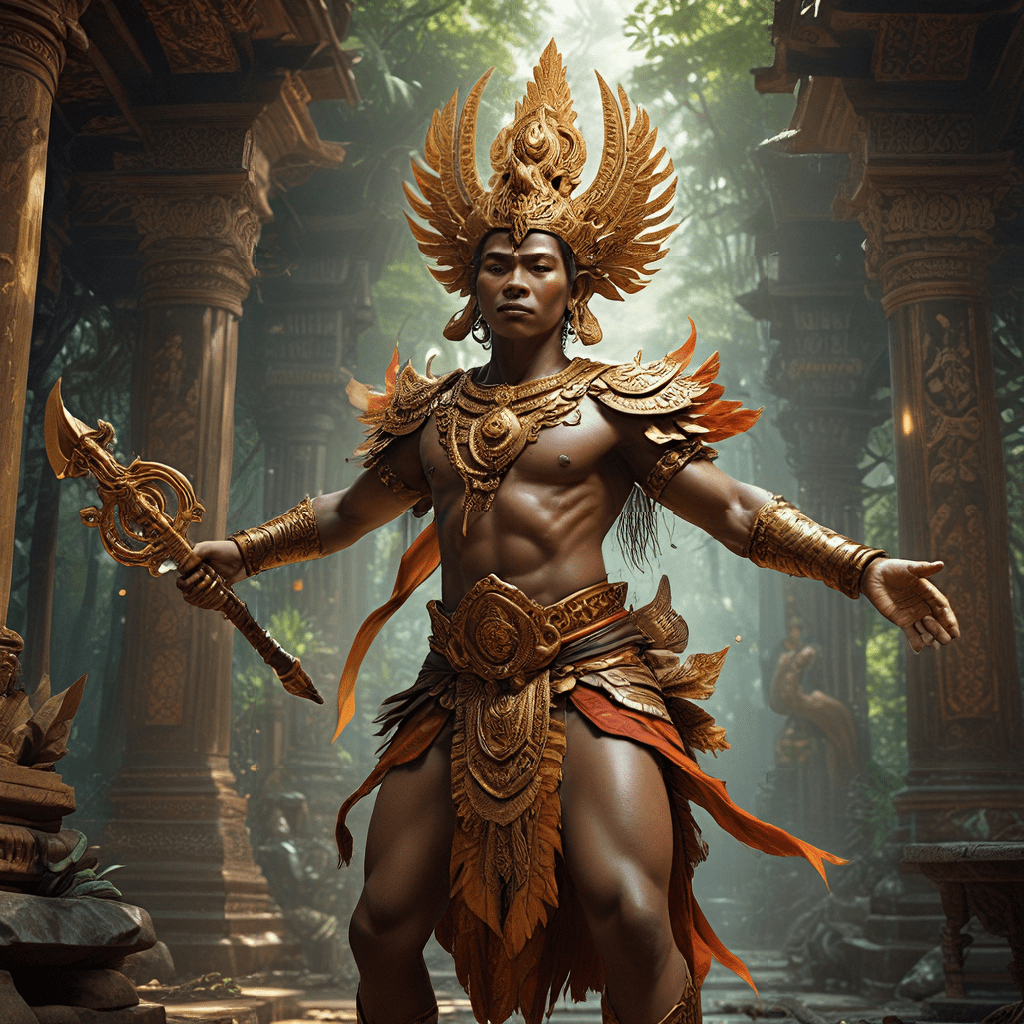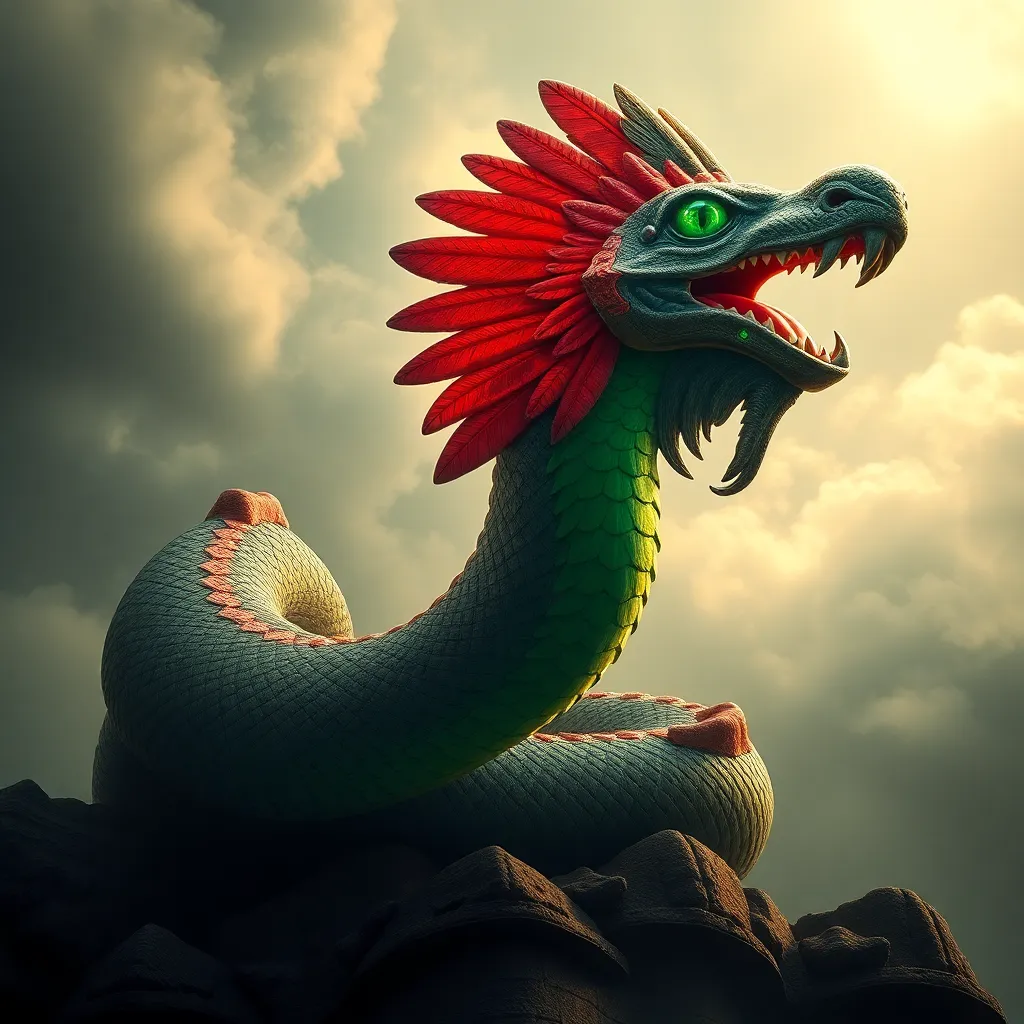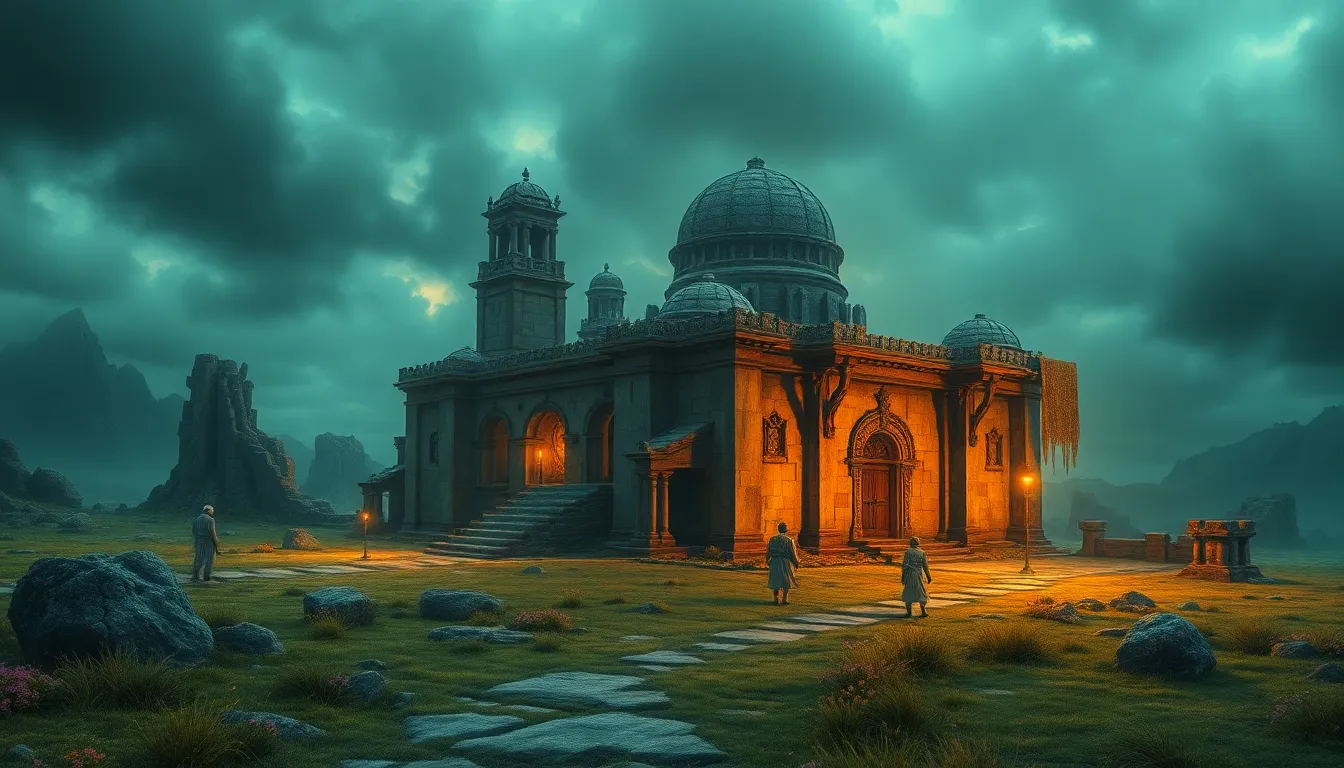Indonesian Mythology: A Tapestry of Beliefs
Indonesia, an archipelago nation with thousands of islands, boasts a rich and diverse tapestry of beliefs, myths, and legends. For centuries, its people have woven together animistic reverence for nature, mystical practices, and ancient stories passed down through generations. This vibrant blend of spiritual traditions has shaped Indonesian culture, providing insights into its history, values, and worldview. From the towering volcanoes to the lush rainforests and the vast blue seas, Indonesian mythology is deeply intertwined with the natural world, reflecting the profound connection between humans and their environment.
The Realm of Spirits and Deities
Indonesian mythology is populated by a vast array of supernatural beings, including spirits, gods, and mythical creatures. These entities are believed to inhabit the physical world, influencing events and interacting with humans. The spirits, known as "roh" or "hantu," are often associated with specific places or objects, and their actions can be both benevolent and malevolent. They can be appeased through offerings and rituals, ensuring their favor and protection.
Deities, referred to as "dewa" or "batara," hold a higher position in the hierarchy of supernatural beings. They are responsible for specific aspects of the natural world or human life. Some prominent deities include Sang Hyang Widhi Wasa, the supreme creator god in Balinese Hinduism, and Batara Guru, the king of the gods in Javanese mythology. These deities are often depicted in intricate temple carvings and sculptures, embodying the awe and reverence that Indonesians have for the divine.
Animism: Reverence for Nature and Its Spirits
Animism, a belief system that attributes spirits and souls to natural phenomena, is deeply ingrained in Indonesian mythology. The natural world is seen as teeming with spiritual forces, and even inanimate objects like trees, rocks, and mountains are believed to possess souls. This reverence for nature is reflected in numerous rituals and traditions, such as offerings made to trees, spirits residing in volcanoes, and ancestral spirits inhabiting mountains.
The belief in nature spirits, known as "kera" or "dewa," permeates Indonesian folklore. These spirits are often associated with specific locations, such as forests, rivers, or mountains. Respecting these spirits is considered crucial for maintaining harmony with the natural world and ensuring prosperity and protection.
Mysticism: The Search for Higher Knowledge and Power
Mysticism, the pursuit of spiritual enlightenment and hidden knowledge, plays a significant role in Indonesian mythology. It revolves around the belief in spiritual experiences, mystical practices, and the attainment of higher states of consciousness. Many Indonesians practice various forms of mysticism, seeking guidance and power through meditation, rituals, and the guidance of spiritual masters.
Mysticism is often intertwined with animistic beliefs, as it involves connecting with the spiritual realm of nature and its unseen forces. Shamanic practices, involving communication with spirits and the use of herbal remedies, are common in various parts of Indonesia. These practices aim to harness the power of the spiritual world for healing, divination, and protection.
The Mythological Landscape of Indonesia
Indonesian mythology is richly textured, with each region and ethnic group developing unique myths and legends. These stories often reflect the local environment, history, and cultural practices. For example, in Bali, the mythology revolves around the concept of "Tri Hita Karana," a philosophy emphasizing harmony between humans, nature, and the divine. In Java, mythology is deeply intertwined with the history of the ancient kingdoms and the rise of Islam. Each island, each region, each ethnic group contributes to the vibrant tapestry of Indonesian mythology.
Key Figures in Indonesian Mythology
Indonesian mythology features a diverse cast of characters, each embodying unique traits, powers, and roles in the spiritual world. Some of these figures are widely recognized across different regions, while others are specific to particular cultural groups. These mythical figures often serve as guides, protectors, or cautionary tales, offering insights into the values and beliefs of Indonesian societies.
A notable figure in Javanese mythology is Batara Guru, the king of the gods, often depicted as a wise and powerful ruler. He is responsible for maintaining order and justice in the divine realm. In Balinese Hinduism, Sang Hyang Widhi Wasa is revered as the supreme creator god, representing the ultimate source of all creation. Other prominent deities include Dewi Sri, the goddess of rice and fertility, whose blessings are sought by farmers, and Dewi Laksmi, the goddess of wealth and prosperity.
Mythical creatures also play significant roles in Indonesian folklore. The Naga, a serpentine dragon-like creature, is a powerful symbol associated with water and fertility. It often appears in temple architecture and ancient stories, representing both danger and protection. The Jinn, also known as Djinn or Genie, are beings of supernatural power who can be either benevolent or malevolent. They are often associated with magic and the unseen world.
The Bujang Ganong, a legendary figure in Sundanese mythology, is a trickster who uses his cunning and wit to outsmart adversaries. He embodies the spirit of defiance and independence, often challenging established norms and authorities. These mythical figures reflect the complex and multifaceted nature of Indonesian mythology, offering a glimpse into the richness and diversity of the spiritual traditions that have shaped the nation's cultural landscape.
The Role of Mythology in Daily Life
Indonesian mythology is not merely a collection of stories and legends; it is deeply ingrained in everyday life, shaping rituals, ceremonies, and cultural practices. The belief in spirits and deities influences various aspects of society, from agriculture and fishing to healing practices and social norms.
In traditional farming communities, rituals are performed to appease ancestral spirits and ensure bountiful harvests. Prayers are offered to Dewi Sri, the goddess of rice, for fertility and protection. Fishermen may perform offerings before venturing out to sea, seeking the blessings of the sea spirits for a successful catch.
Mythological stories serve as moral lessons, guiding individuals on ethical behavior and societal values. Tales of karma, reincarnation, and the consequences of wrong actions offer guidance for living a virtuous life. The fear of supernatural retribution keeps people vigilant about respecting the spirits and fulfilling their obligations to the community.
Mythology also plays a role in healing practices and traditional medicine. Shamans and healers often use their knowledge of herbs, rituals, and the spiritual world to treat illnesses and ailments. The power of spirits is believed to influence health and well-being, and rituals are often performed to restore balance and harmony in the body.
Through these various aspects of life, Indonesian mythology continues to shape the worldview and cultural practices of millions of people. It provides a framework for understanding the world around them, navigating the challenges of life, and celebrating the beauty and mystery of the natural world.
The Influence of Hinduism and Buddhism
The arrival of Hinduism and Buddhism in Indonesia around the first century AD had a profound impact on the development of Indonesian mythology. These religions introduced new deities, concepts, and rituals, enriching the existing belief system and creating a unique blend of indigenous and foreign influences.
Hinduism introduced the concept of a pantheon of gods, each governing specific aspects of life. The influence of Hindu mythology is evident in the worship of deities like Shiva, Vishnu, Brahma, and Durga, and the adoption of Hindu epics like the Ramayana and Mahabharata. These epics, retold in local versions, became integral parts of Indonesian folklore, shaping stories and cultural practices.
Buddhism brought its own set of deities and philosophical concepts, focusing on enlightenment, compassion, and the cycle of birth and death. The influence of Buddhism is seen in the adoption of concepts like karma, rebirth, and the search for spiritual liberation.
However, the influence of these religions did not erase the existing animistic beliefs. Instead, they integrated with the indigenous traditions, creating a unique blend of spirituality. For example, the worship of ancestral spirits continued alongside the veneration of Hindu and Buddhist deities. This synthesis resulted in a rich and diverse mythology that reflected the unique cultural identity of Indonesia.
Theories on the Evolution of Indonesian Mythology
The evolution of Indonesian mythology is a complex process that has been shaped by various factors, including indigenous beliefs, external influences, and historical events. Several theories have been proposed to explain the development of this rich tapestry of stories and legends.
The animistic theory posits that the foundation of Indonesian mythology lies in the reverence for nature and the belief in spirits inhabiting the natural world. This theory suggests that the worship of ancestors, spirits, and natural phenomena developed over centuries, forming the core of indigenous religious practices.
The diffusion theory emphasizes the influence of external cultures, particularly Hinduism and Buddhism, on the development of Indonesian mythology. This theory explains the introduction of new deities, concepts, and rituals from these religions, which were subsequently integrated into existing beliefs.
The historical theory highlights the role of historical events, such as the rise and fall of kingdoms, migrations, and interactions with other cultures, in shaping the evolution of Indonesian mythology. This theory suggests that stories and legends were passed down through generations, reflecting the experiences and values of different societies.
These theories provide different perspectives on the development of Indonesian mythology, but they are not mutually exclusive. It is likely that a combination of these factors contributed to the creation and evolution of the rich and diverse mythological traditions found in Indonesia today.
Modern Interpretations and Adaptations
Modern Indonesians continue to be fascinated by their rich mythological heritage. While traditional beliefs and practices persist in many communities, contemporary interpretations and adaptations of mythology are emerging, reflecting the changing cultural landscape.
Modern literature, art, and film often draw inspiration from Indonesian mythology. Authors and filmmakers reimagine classic stories, reinterpreting characters, and themes for contemporary audiences. This reinterpretation of mythology keeps the stories relevant and engages a new generation with their cultural heritage.
Many Indonesians use mythology as a source of inspiration for creative expression. Contemporary artists use mythical themes in their paintings, sculptures, and installations, bringing new perspectives to traditional narratives. This creative exploration of mythology allows for a deeper understanding and appreciation of its cultural significance.
The modern adaptation of Indonesian mythology reflects the ongoing process of cultural transmission and reinvention. While traditional beliefs remain important, contemporary interpretations ensure that the stories and legends continue to thrive and inspire future generations.
FAQ
Q: What are the main elements of Indonesian mythology?
A: Indonesian mythology is a blend of animism and mysticism, emphasizing the reverence for nature, the belief in spirits and deities, and the search for higher knowledge and power. It is also heavily influenced by Hinduism and Buddhism, which introduced new deities and concepts, creating a unique syncretic system of beliefs.
Q: How is Indonesian mythology relevant today?
A: Indonesian mythology continues to shape cultural practices, rituals, and ceremonies. It provides a framework for understanding the world, navigating life's challenges, and celebrating the beauty and mystery of the natural world. Modern re-interpretations and adaptations are keeping the stories alive and relevant for new generations.
Q: What are some examples of Indonesian mythical creatures?
A: Some well-known mythical creatures include the Naga (serpentine dragon), the Jinn (supernatural beings), and the Bujang Ganong (a trickster figure). These creatures often represent specific aspects of the natural world, cultural values, or moral lessons.
Q: How does Indonesian mythology compare to other mythologies?
A: Indonesian mythology shares similarities with other mythologies around the world, such as the belief in spirits, deities, and the supernatural. However, it is also unique due to its blend of animistic beliefs, Hindu and Buddhist influences, and its diverse range of stories and characters specific to each region and cultural group.




